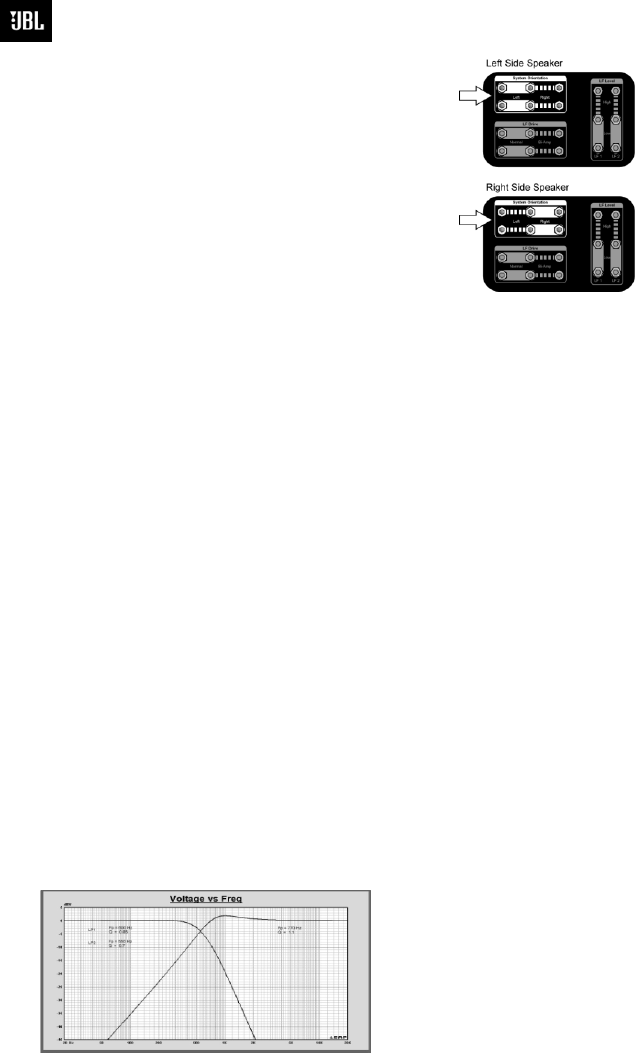
receives the low and which woofer receives the
midrange signals. One system should be set to “left”
and be positioned as the left speaker system. The other
system should be set to “right” and be positioned as
the right speaker.
HF Drive / LF Drive
This allows to switch normal drive using a set of
amplifiers and bi-amp drive using 2 sets of amplifiers.
Move the shorting bar only in case of bi-amp driving.
Selection of the Bi-Amp position for the shorting bars bypasses the crossover
function for the full range woofer and the high frequency driver. The low
frequency woofer and the ultra-high frequency drivers are unchanged. Use of
this feature requires the addition of an external dividing network to provide the
700 Hz primary crossover point for the system. The built-in attenuation and
equalization for the 476Be remains in place. The high frequency level trim
remains operational, as does battery bias for both the low and high frequency
sections. Normally all 3 sets of bars (2-LF and 1-HF) would be moved
together. It is possible to operate the system with just the low frequency
system or the high frequency system set to Bi-Amp. Under this circumstance
it would be necessary to use a combination of external dividing network along
with the internal network. However, this would require some very special
needs and is not generally recommended. Figure 12 shows the low frequency
and high frequency voltage drive functions necessary to properly Bi-Amplify a
DD66000 system using an external dividing network and two amplifiers
channels. Neither the low pass nor high pass drive is a standard Butterworth
alignment or, for that matter, any standard alignment. The provided drive
curves were derived using the internal passive network and resulting acoustic
low pass and high pass shapes. Duplicating these shapes will result in the
same frequency response and directivity pattern as a passive DD66000. The
low pass is made up of two cascaded second order sections and the high pass is
a single high pass section. The values within a high quality analog dividing
network can usually be modified to achieve these results. Recent digital
crossover units will have no problem duplicating these curves.
Figure 12


















